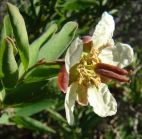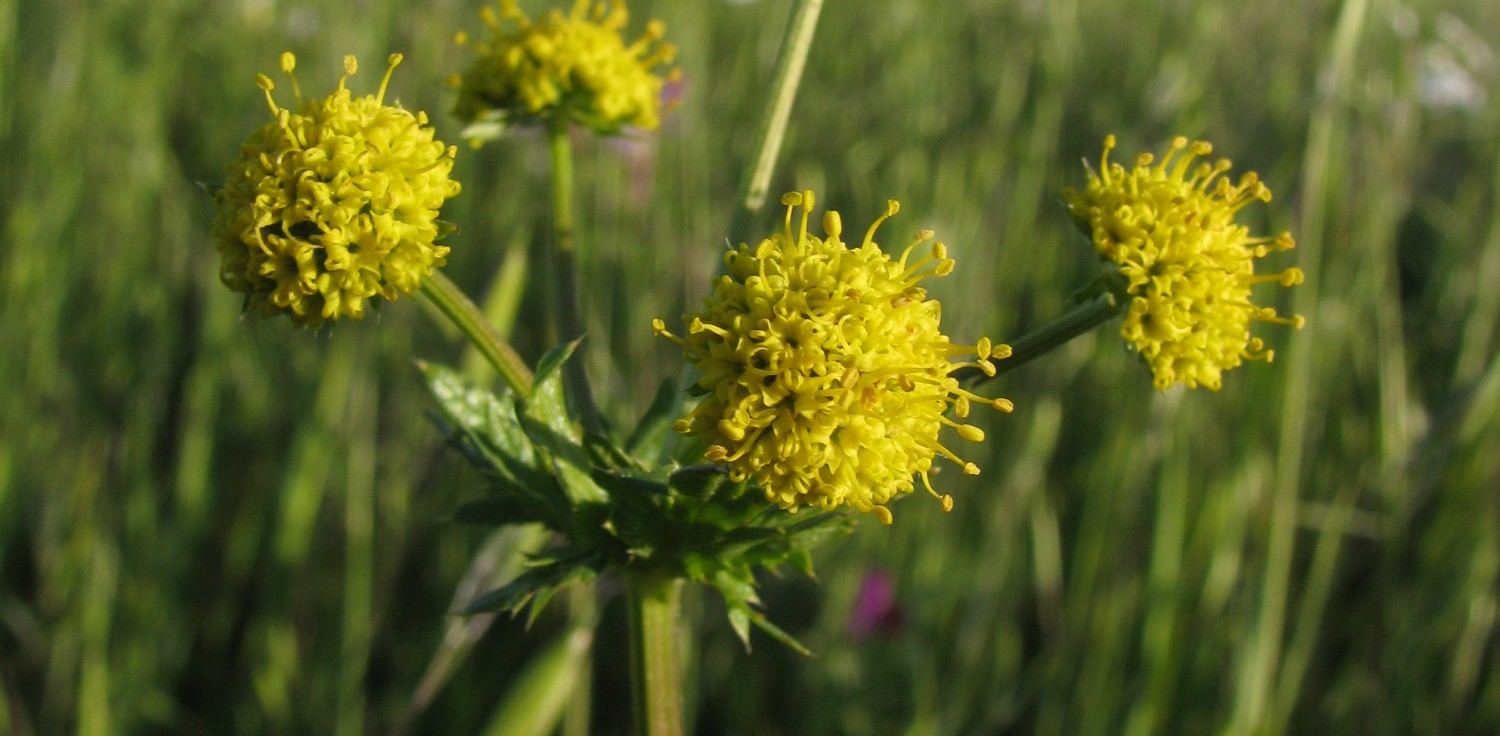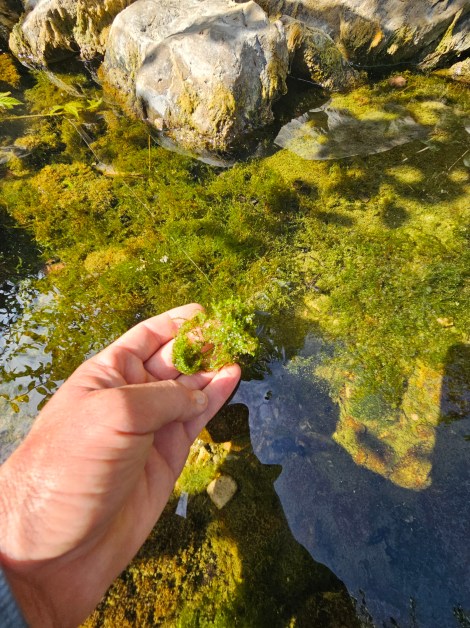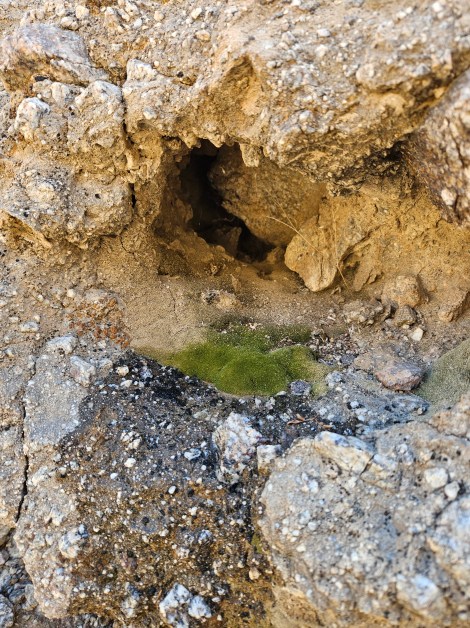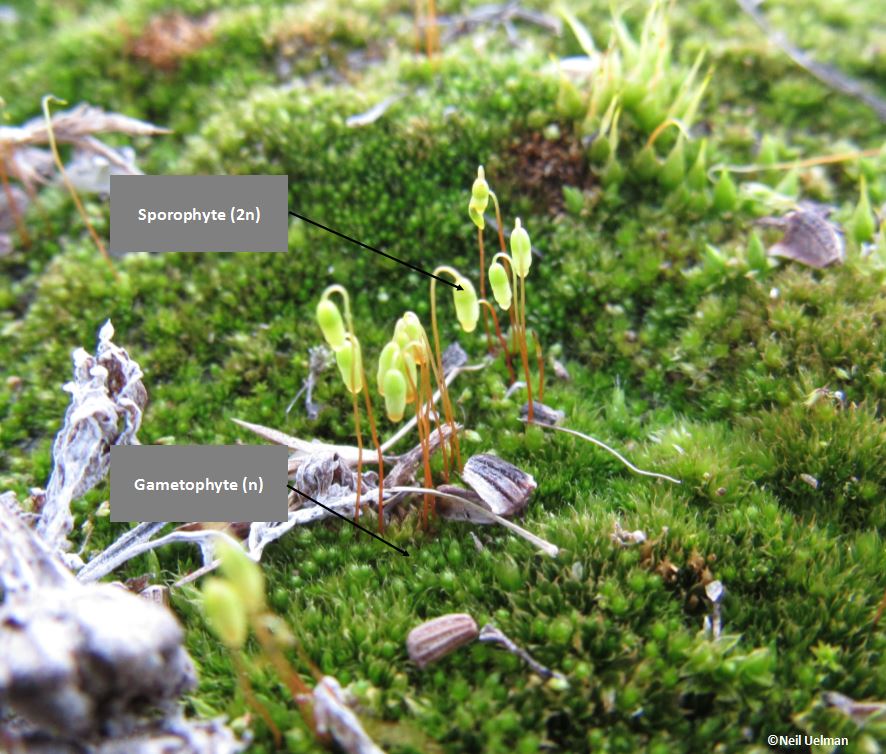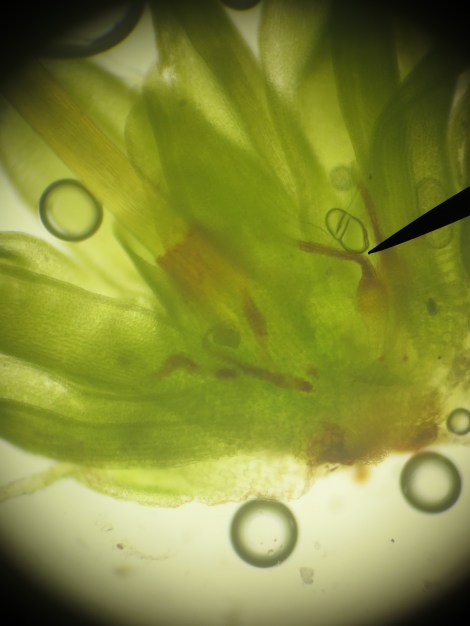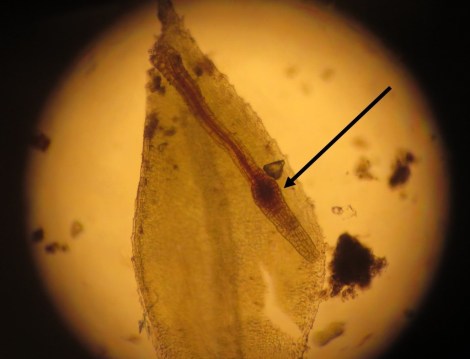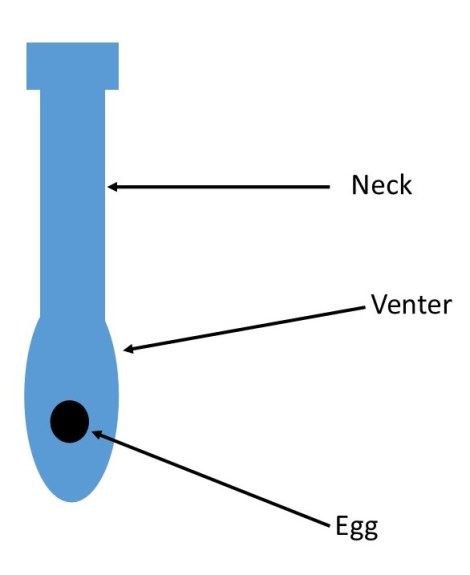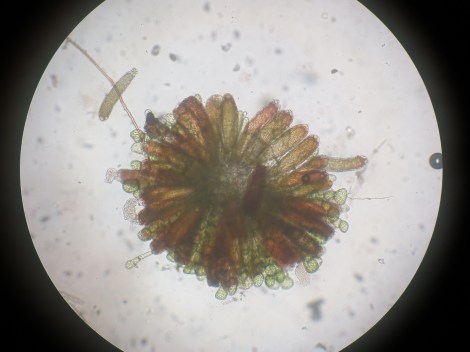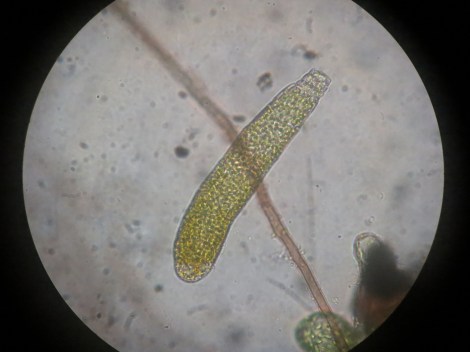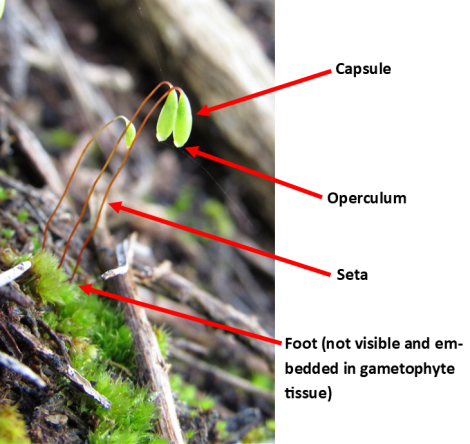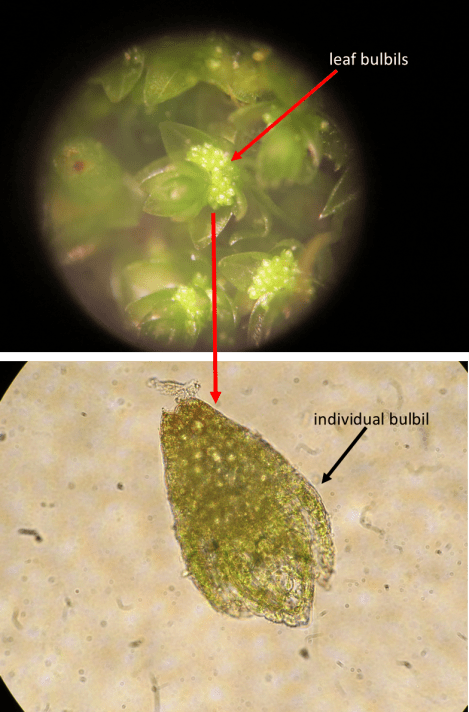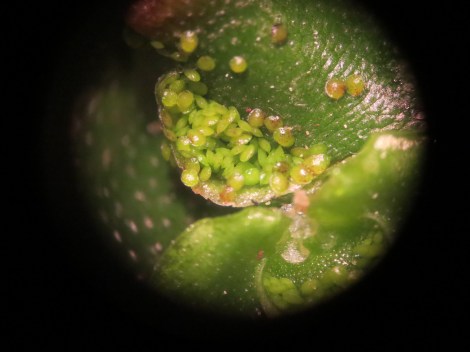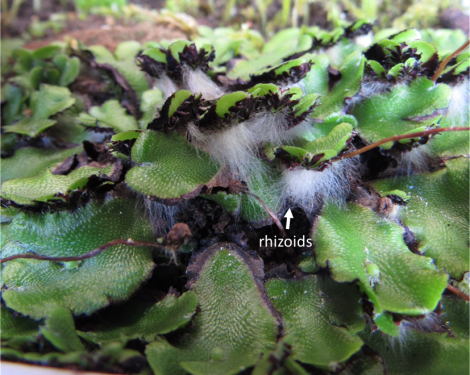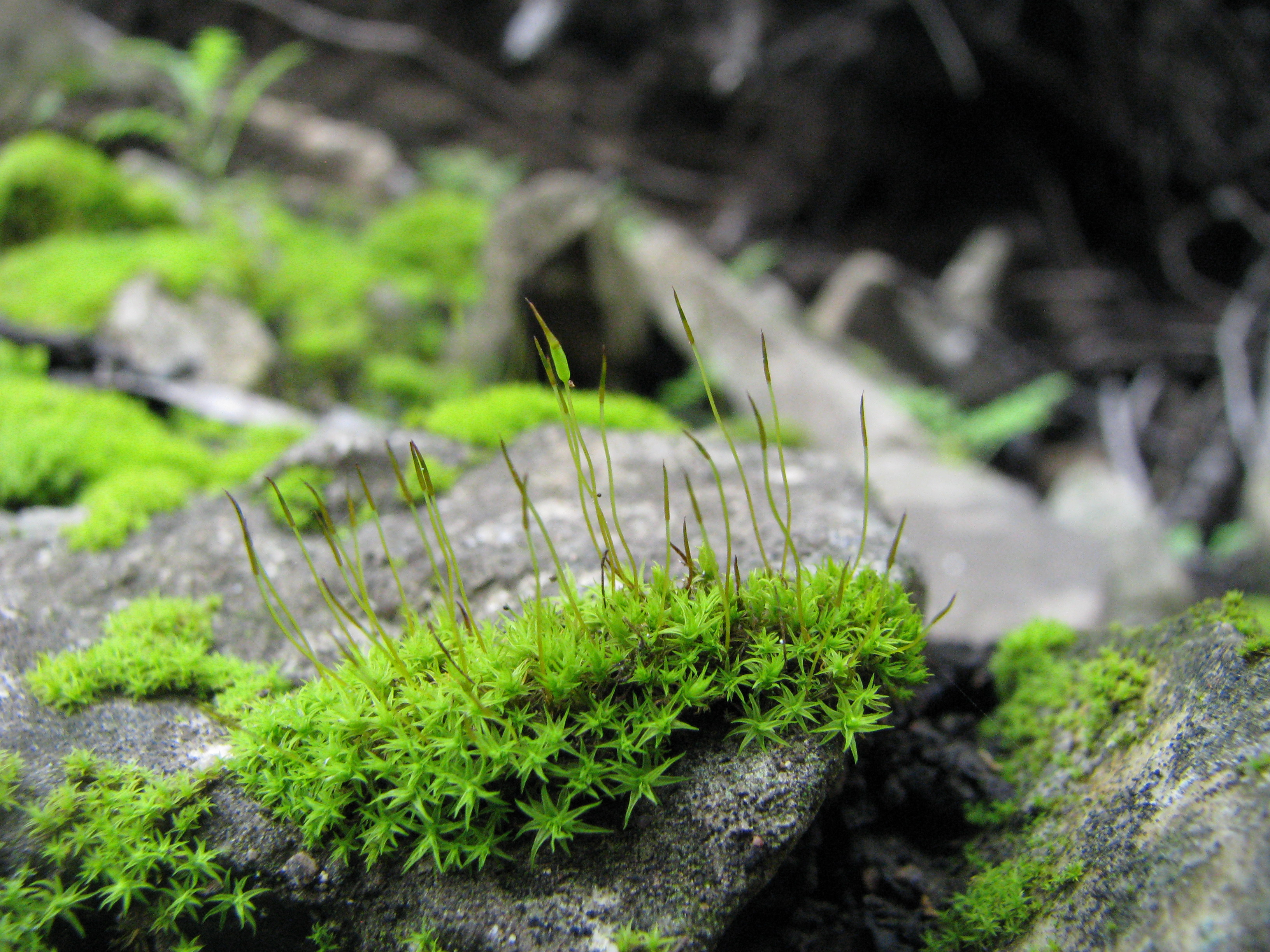 Vinealobryum vineale
Vinealobryum vineale
Checklist of the Bryophytes of the Palos Verdes Peninsula – Neil Uelman (2024) – Crossosoma Vol. 49 (1) – see link below:
https://socalbot.org/wp-content/uploads/2024/10/Crossosoma_Volume49_1.pdf
The PVP is home to many bryophyte species. These bryophytes can be found on soil, bark, rock, sand, and even man-made surfaces like brick or concrete.
Bryophytes are a group of land plants (embryophytes) that lack lignified vascular tissue, making them very tiny plants! Bryophytes are comprised of three main types:
1. Mosses (Bryophyta)
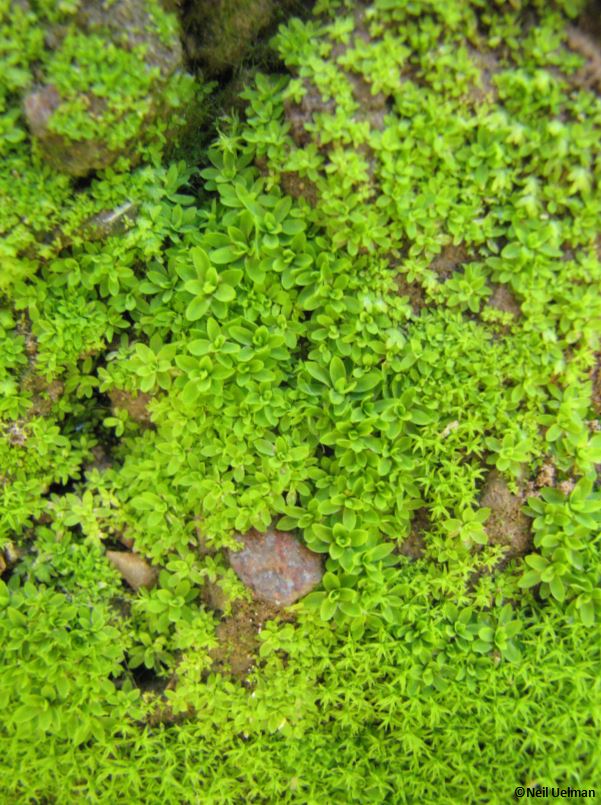 Example: Hennediella stanfordensis
Example: Hennediella stanfordensis
2. Liverworts (Marchantiophyta)
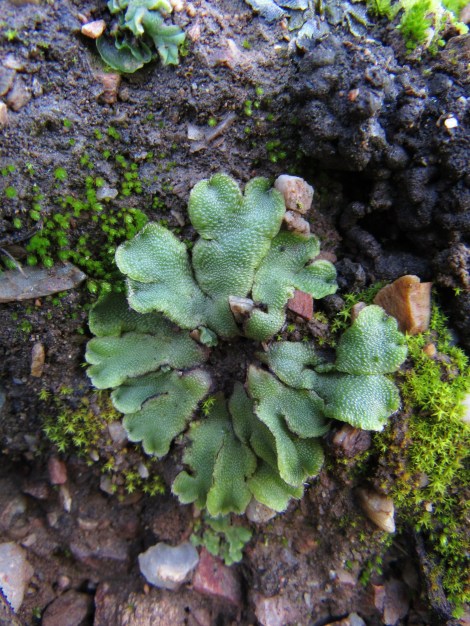 Example: Calasterella californica
Example: Calasterella californica
3. Hornworts (Anthocerotophyta)
 Example: Paraphymatoceros pearsonii
Example: Paraphymatoceros pearsonii
Click to access bryophyte-phylogeny-poster.pdf
Bryophytes can be found worldwide. They can occur in lush rainforests, temperate forests, at high elevations (alpine), near the ocean, in freshwater systems (yep, growing underwater!), and even in extreme places like deserts (both cold and hot!). All bryophytes produce spores instead of seeds, and their life cycle is dominated by the multicellular haploid gametophyte stage (n).
moss (Leptodictyum riparium) growing underwater in a fresh water stream.
moss (Jaffueliobryum wrightii) growing among rocky outcrops out in the desert.
Spore from a hornwort seen under high magnification.
The haploid (n) gametophyte and the diploid sporophyte (2n)
The sporophyte stage (2n) is short-lived, remains attached to the gametophyte, and solely depends on the gametophyte (n) for growth and survival. Bryophytes also need moisture to reproduce and stay metabolically active; therefore, bryophytes are closely tied to the moisture availability in their environment (poikilohydric) and will dry out and become inactive when moisture is absent. For reproduction, sperm is produced in and released from the antheridia. The sperm, once released, must swim through a thin film of water and follow a chemical signal that is released by the archegonium. The archegonium is a structure (see parts of an archegonium below) that contains the ovum, and once the ovum is fertilized, a sporophyte will be produced.
Archegonium (tip of black arrow)
Individual archegonium up close (black arrow) and note the vase-like shape of the structure
Parts of the archegonium
Cluster of antheridia (top image) and an individual antheridium (below image). Note the cigar shape of the antheridium.
The sporophyte is the stage in a bryophyte’s life cycle that releases the spore. It comprises a foot (often not visible and embedded in the gametophyte tissue), a seta (long skinny stalk), a calyptra (protective gametophytic tissue that covers the developing capsule and protects/hydrates it), a capsule (holds the spore), and an operculum (lid-like structure that pops off).
Operculum & Calyptra
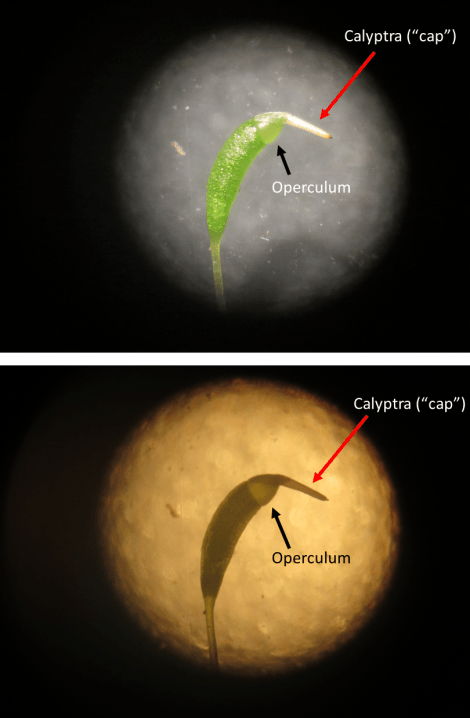
Operculum
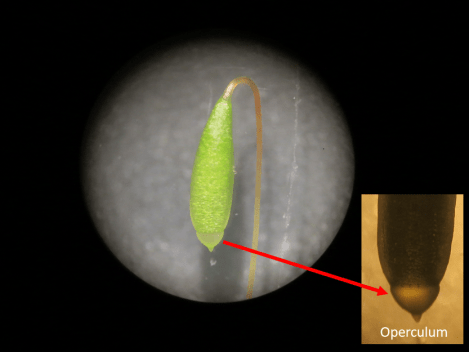
Once the calyptra and operculum pop off, the mouth of the capsule can (or sometimes does not) have specialized teeth called peristome teeth. If present, the peristome teeth can flex inwards, grabbing spores inside the capsule and then flexing outward, releasing the spores. This flexing inward and outward of the peristome teeth is regulated by changes in humidity. See below images and video:
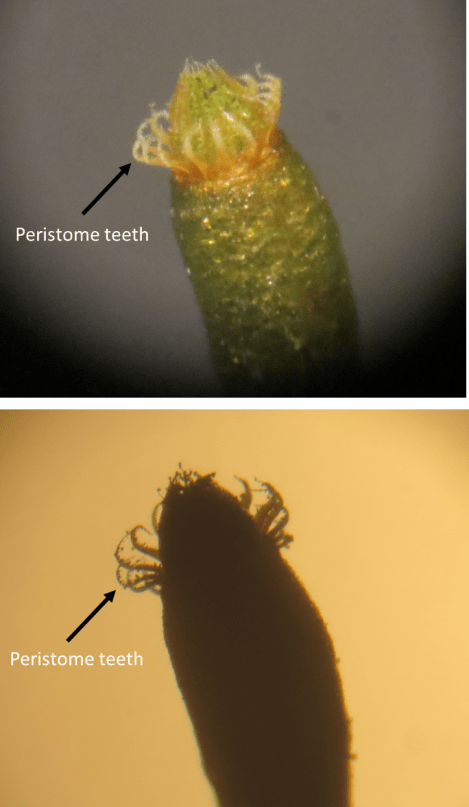
Sporophyte of a moss (Amblystegium serpens) releasing spore. With changes in humidity (I was gently breathing on the capsule), the peristome teeth flex in and then out to disperse the spore.
Bryophytes can even reproduce asexually via leaf fragmentation and other vegetative structures such as gemmae, bulbils, and rhizoidal tubers (tubers found on the rhizoids). These vegetative structures can produce a new individual plant, but that new individual plant will be an exact clone of the parent plant.
Rhizoidal tuber attached to rhizoid
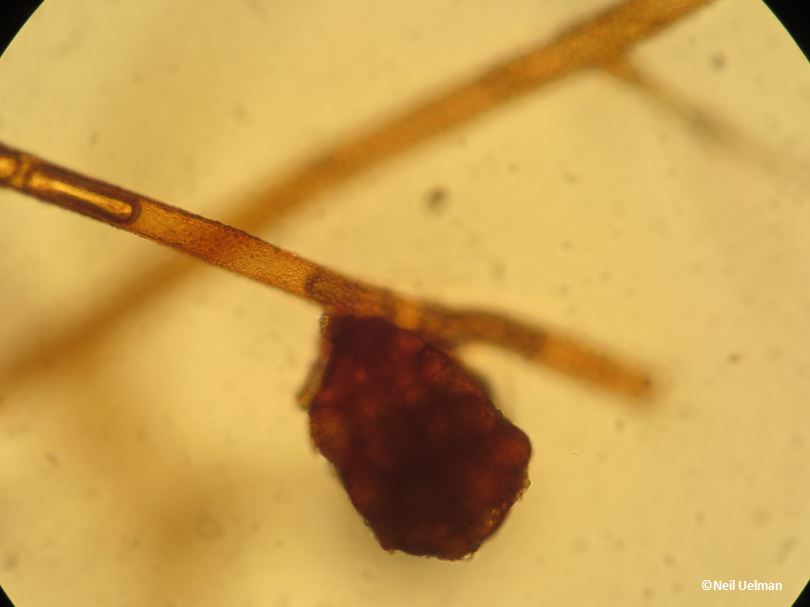
Leaf bulbils (usually found in the leaf axils)
Disc-shaped gemmae of Lunularia cruciata
All bryophytes are poikilohydric, so they cannot maintain and/or regulate internal water content. In other words, if water is available, bryophytes are active and growing; however, if water is absent, then bryophytes become inactive and stop growing. Bryophytes can remain inactive and dry for long periods of time.
Videos of mosses (Syntrichia sp.) rehydrating (mosses in the videos have been dry for over a year). Once a drop of water is placed on the mosses in the videos, they immediately begin to rehydrate and become active:
Bryophytes do not have roots like vascular plants but rather structures known as rhizoids. These rhizoids are hair-like, unicellular, or multicellular projections extending from the lower epidermal cells. Rhizoids anchor bryophytes to whatever substrate they are growing on and can sometimes help uptake water and minerals, mainly by capillary action.
Rhizoids on a liverwort (Calasterella californica)
Rhizoids on a moss (Brachythecium albicans)
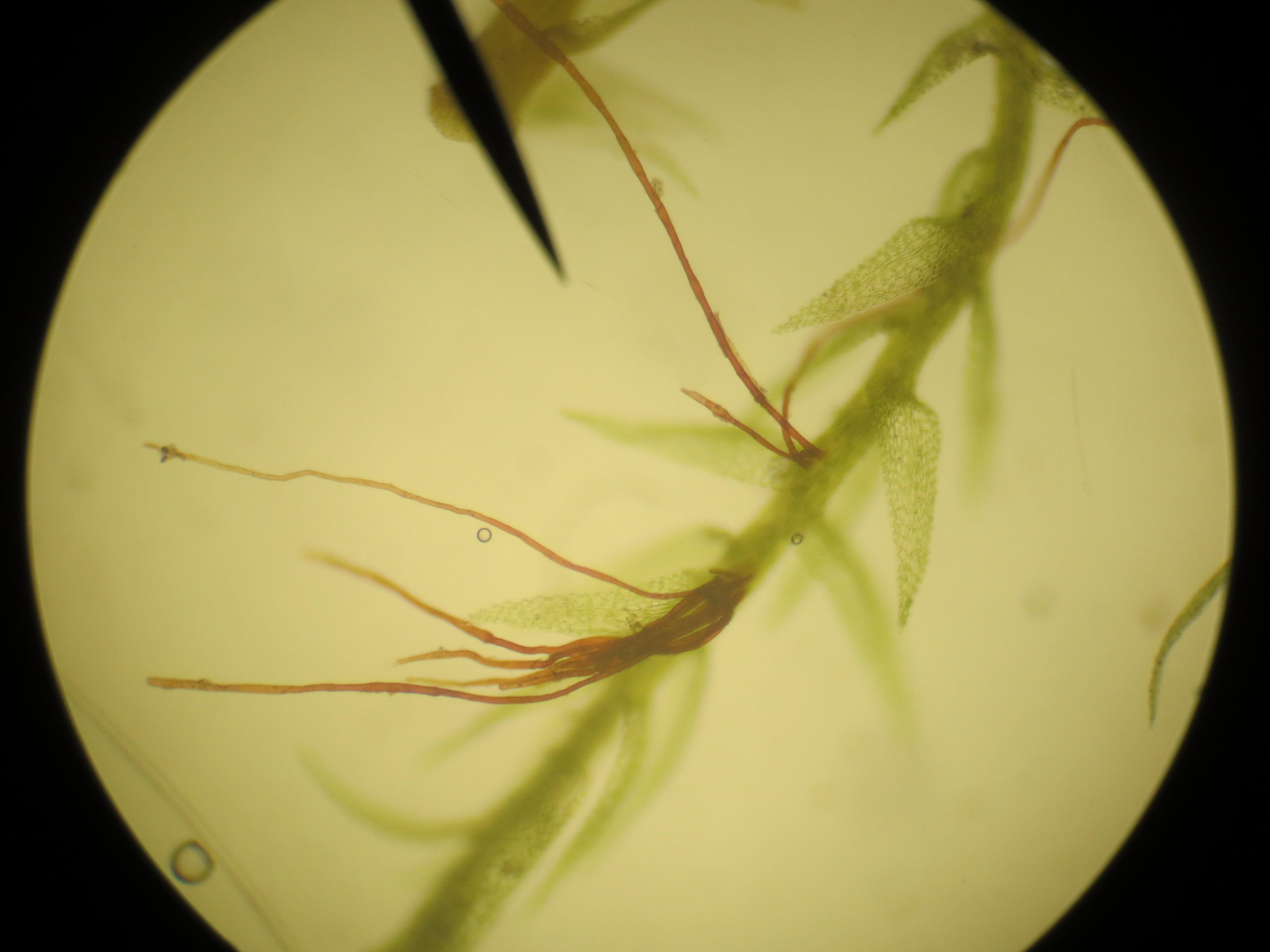
Below is a helpful way to tell mosses, liverworts, and hornworts apart (Doyle, W.T., and R.E. Stotler. 2006. Contributions toward a bryoflora of California III. Keys and annotated species catalogue for liverworts and hornworts. Madroño 53:89-197):
Liverworts and hornworts:
- adult gametophytes leafy or thalloid, when leafy, usually bilaterally symmetrical
- leaves, when present, without a midrib (=costa)
- oil-bodies usually present in liverworts and absent in hornworts
- leaves of many species lobed
- rhizoids unicellular
- sporophytes either lack a meristem (liverworts) or have one between the foot and capsule (hornwort)
Mosses:
- adult gametophytes leafy and mostly radially symmetrical
- leaves of most species with a distinct midrib (=costa)
- oil-bodies always absent
- leaves not lobed
- rhizoids uniseriate filaments
- sporophytes with an apical meristem
On the PVP, bryophytes can be found on soil, bark, rock (terrestrial & aquatic), brick, and concrete. The most common substrate is soil. The PVP has both ephemeral and perennial species of bryophytes. Hornworts and liverworts are uncommon and restricted to mesic (wetter) areas. Mosses are the most common in both exposed and mesic sites.
Mosses growing on soil on the PVP

Mosses growing on old growth bark on the PVP

Liverwort growing on soil on the PVP
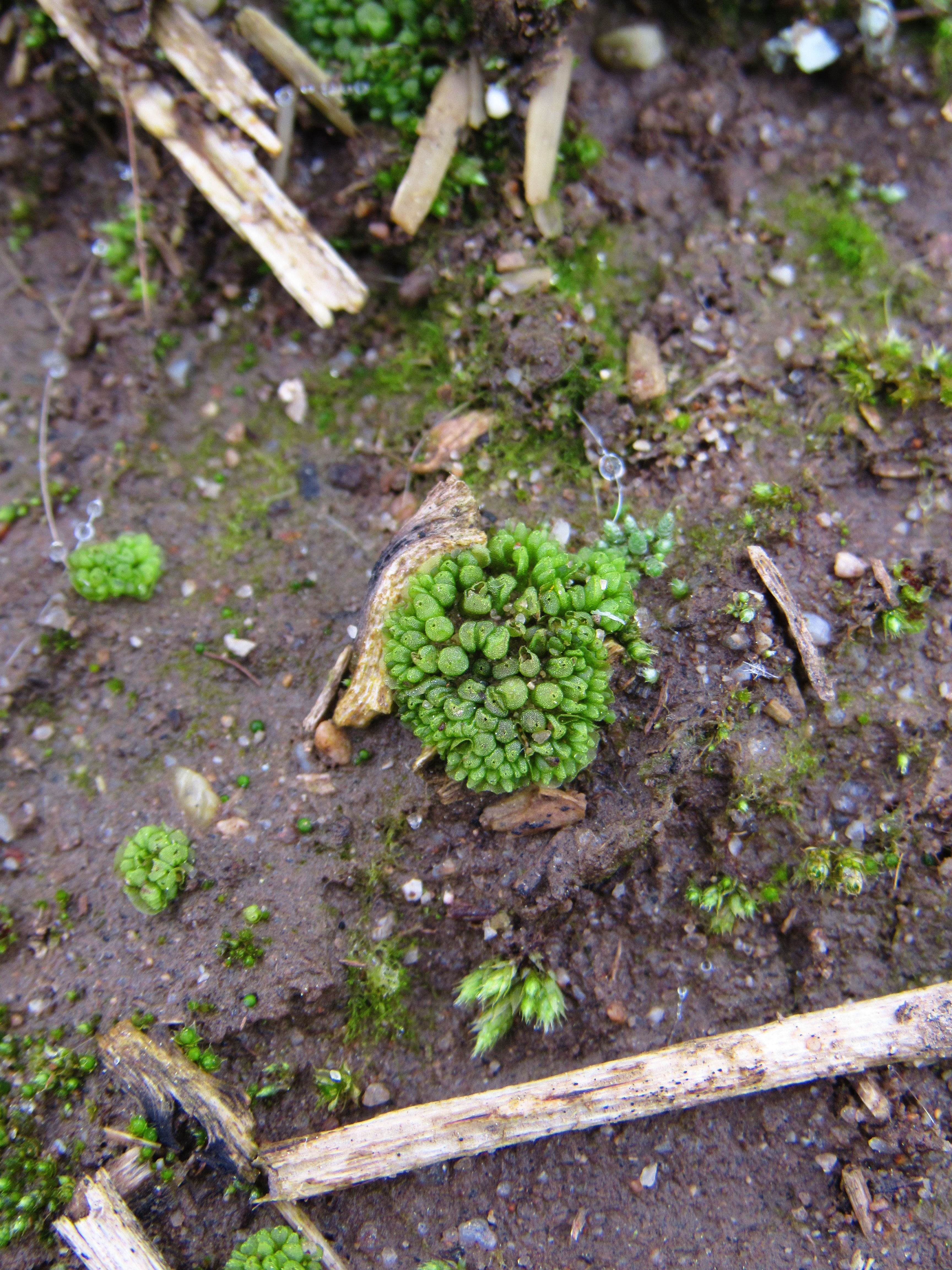
Moss growing rock on the PVP

Moss growing on brick on the PVP
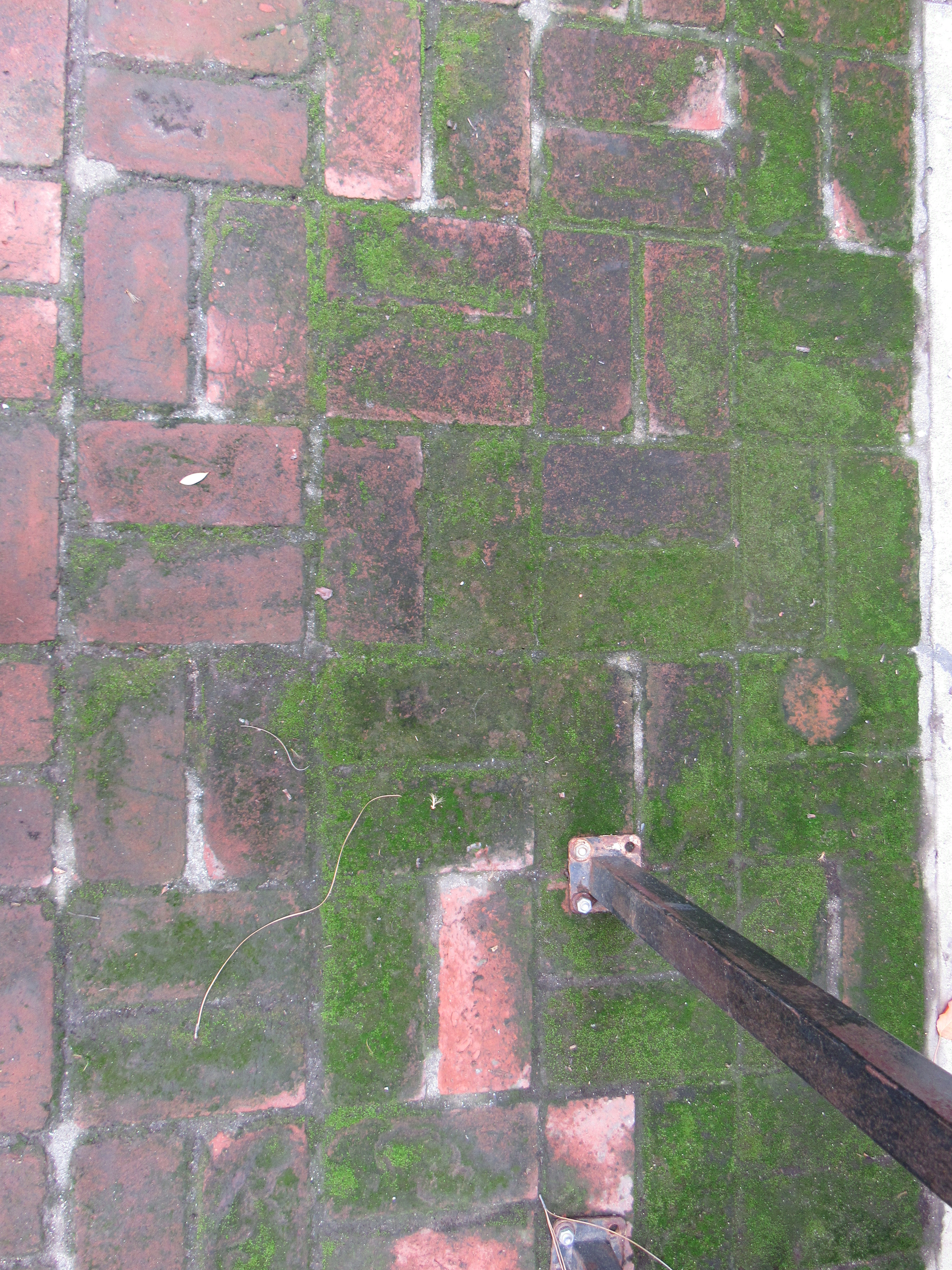
So far, 75 species of bryophytes have been found on the PVP. The three most common bryophyte families encountered are Bryaceae, Pottiaceae, and Brachytheciaceae.
The link to the Checklist of the Bryophytes of the Palos Verdes Peninsula is at the top of this page.
Link to the Bryophyte chapter of California Native Plant Society (CNPS): http://bryophyte.cnps.org/index.php
